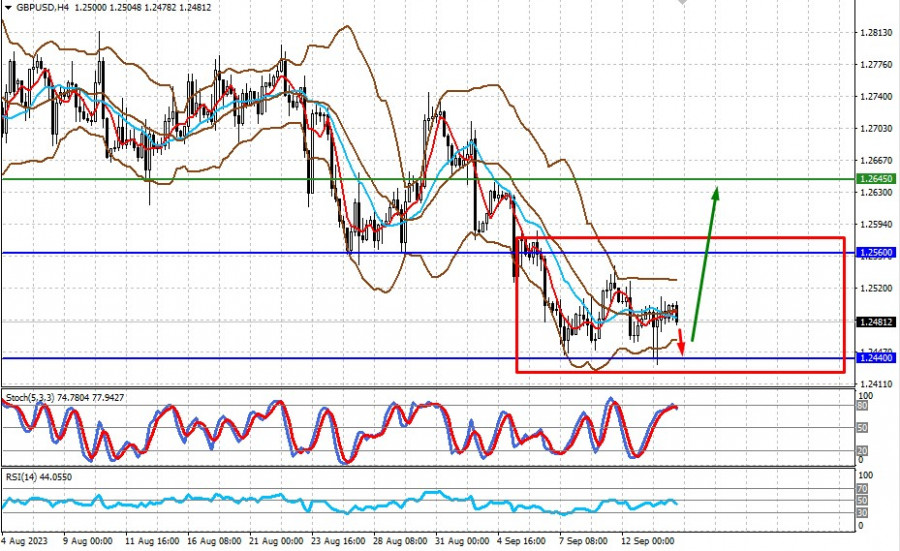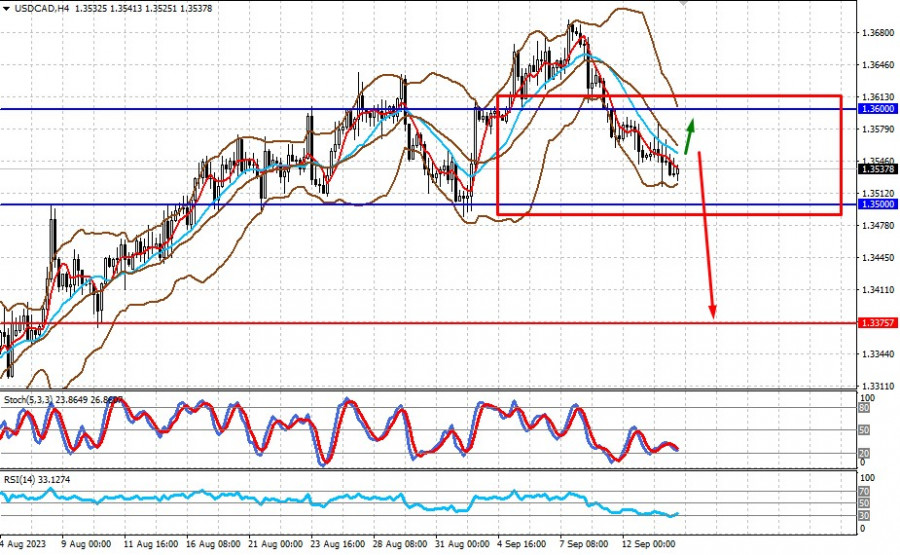
Yesterday, important economic data was released in the US. Oddly, the market did not respond to the crucial statistics. Watching everything that's happening, one gets the impression that investors have simply burned out in anticipation of the high-impact data to understand what the Federal Reserve will decide soon. Market participants tried to puzzle out whether the central bank wuld adjust its monetary policy or reiterate that further interest rate hikes would be required.
In reality, the reasons are much more transparent. There are main reasons. The first one is the consistent weakening of the labor market in the US. We have already expanded on this topic before, so now we'll just outline the main ideas for this issue.
For a start, the labor market has been logging steady average growth of new jobs by numbers below the threshold of 200,000. At the same time, there is a systematic increase in the number of unemployment benefit claims, which is notably above this mark. Simple arithmetic calculations show that the creation of new jobs is significantly lower than lay-offs, at least for the last three months. According to the latest data, after reaching a multi-year low of 3.5%, unemployment started to rise again and grew to 3.8% in August.
Under such conditions, the Federal Reserve has to tackle significant problems. It will be extremely difficult for it to continue fighting inflation in the face of a potential downturn in the national economy. That's why the market consensus suggests that the Federal Reserve should terminate the cycle of rate hikes. In this context, investors basically did not react to the consumer price indices.
The second reason to highlight is the market understanding of the anticipated inflation growth. Given the clear weakness in the labor market, which has been frequently mentioned by Federal Reserve policymakers and its Chairman Jerome Powell, making decisions about raising rates on the back of stubborn inflation will now be quite challenging.
What should markets expect?
In this regard, we believe that prior to the Fed meeting on September 20th, we could hardly expect any significant market movements. Futures on the federal funds rate suggest that there's a 98% probability that the key interest rate range of 5.25% to 5.50% will be maintained at the end of the meeting. Interestingly, just yesterday, before the inflation figures were published, this probability was estimated at 92%.
Evaluating the balance of power and factors influencing investor sentiment, we believe that there is a high likelihood of the range-bound market up to September 20th.
Intraday outlook


GBP/USD
GBP/USD is trading in a very narrow range. The ECB is widely expected to keep the status quo and leave the refinancing rate unchanged. This decision will put pressure on the currency pair. The instrument will decline to the lower border of a wider range between 1.2440 and 1.2560. GBP/USD is likely to remain in this range before the Fed's policy meeting on September 20. The currency pair could climb to 1.2645 if the regulator does not raise interest rates.
USD/CAD
USD/CAD has settled above 1.3500. The anticipated pause in the Fed's rate hikes and a rally in crude oil prices are weighing on the instrument. After a consolidation in the range between 1.3500 and 1.3600, USD/CAD could fall to 1.3375 after the Federal Reserve announces its policy decisions.